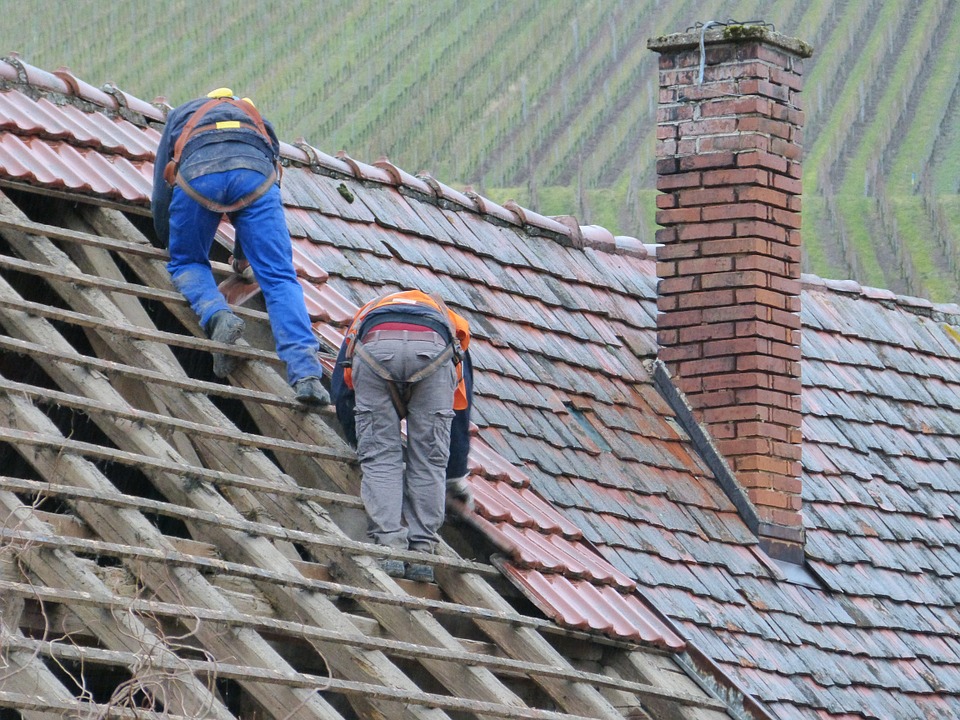Recognizing the Different Types of Roof Coverings: A Comprehensive Overview for Homeowners
In the world of homeownership, selecting the suitable roofing style is a decision that lugs considerable implications for both performance and aesthetic charm. With a selection of alternatives-- ranging from the standard gable to the modern level-- each kind presents distinct benefits and challenges that must straighten with the house owner's environmental considerations and specific demands. Comprehending these distinctions not only help in making an enlightened option yet also influences long-lasting maintenance and power efficiency. As we discover the details of different roof kinds, it comes to be noticeable that dimension does not fit all; the right option might surprise you.
Saddleback Roof
Saddleback roofs, characterized by their triangular form, are amongst one of the most preferred roof styles as a result of their simplicity and performance in losing water and snow. This design includes two sloping sides that meet at a ridge, permitting efficient drain and minimizing the risk of water buildup. The high pitch generally connected with gable roofing systems improves their capacity to take care of heavy precipitation, making them suitable for numerous environments.
In enhancement to their practical benefits, saddleback roofs use aesthetic flexibility. They can be adapted to different building styles, from typical to contemporary homes. The design can additionally suit extra features such as dormer windows, which improve all-natural light and ventilation in the attic room room.
In addition, gable roofs supply adequate room for insulation, adding to power performance. House owners can select from a selection of roofing materials, consisting of asphalt shingles, steel, and tiles, better boosting customization alternatives.
Despite their advantages, saddleback roofs may need extra support in areas susceptible to high winds or heavy snowfall. In general, the saddleback roof remains a popular selection due to its blend of capability, longevity, and aesthetic appeal.
Apartment Roofs
Flat roofing systems are usually identified for their minimal layout and sensible applications, especially in industrial and industrial settings (oahu roofing). These roofings feature a virtually horizontal or straight surface area, which enables easy construction and versatile room application. While they might do not have the visual allure of angled roofs, flat roof coverings supply numerous advantages, specifically in city settings where taking full advantage of room is critical
One of the main benefits of flat roofings is their accessibility. House owners can utilize the roof space for numerous functions, such as roof yards, balconies, or photovoltaic panel setups. Furthermore, level roofing systems are generally much more cost-efficient to preserve and mount compared to their sloped counterparts, as they require fewer products and labor.
Nonetheless, level roofings do present certain difficulties. Proper drain is necessary to protect against water merging, which can cause leakages and architectural damage. For this reason, selecting top quality waterproofing materials and regular assessments are important for making sure long life. Typical products used for flat roof coverings include built-up roof (BUR), changed bitumen, and single-ply membranes, each offering distinctive benefits. Generally, flat roof coverings function as a adaptable and functional option for lots of homeowners and businesses alike.
Hip Roofs
Hip roofs are identified by their sloped sides that converge at the top, forming a ridge. This layout stands out from saddleback roofs, as all four sides of a hip roofing system slope downwards toward the wall surfaces, supplying a more stable structure. The angle of the slopes can differ, allowing for versatility in architectural appearances and capability.
One of the key advantages of hip roofing systems is their capacity to stand up to hefty winds and unfavorable weather condition problems. The sloped surfaces make it possible for better water drain, decreasing the risk of leaks and water damage. Furthermore, hip roofings use increased attic space, which can be utilized for storage or perhaps transformed right into habitable locations.
However, building a hip roof covering can be extra expensive and complex than simpler roofing system kinds, such as saddleback roofs. The extra material and labor associated with producing the slopes and guaranteeing appropriate structural stability can lead to greater costs. Regardless of these disadvantages, several home owners favor hip roofing systems for their longevity, aesthetic charm, and potential for power effectiveness.
Mansard Roof Coverings
Mansard roofs, often acknowledged by their unique four-sided style, feature two inclines on each side, with the reduced slope being steeper than the upper. This architectural design, originating from France in the 17th century, is not just visually appealing however useful, as it takes full advantage of the functional space in the upper floors of a structure. The steep reduced slope enables more clearance, making it an ideal selection for attics or lofts, which can be exchanged living spaces.
Mansard roofings are identified by their versatility, accommodating different building designs, from standard to modern-day. They can be created with different products, including asphalt shingles, slate, or steel, offering homeowners with an array of alternatives to suit their budget plans and preferences. Furthermore, the design enables the integration of dormer windows, boosting all-natural light and air flow in the top degrees.
Nevertheless, it is vital to take into consideration the possible drawbacks. Mansard roofs might require more maintenance due to the intricacy of their layout, and their steep inclines can be testing for snow and rain runoff. Overall, mansard roofs integrate sophistication with usefulness, making them a popular choice among homeowners seeking distinctive building features.
Dropped Roofings
As property owners significantly look for simpleness and performance in their architectural layouts, lost roofing systems have arised as a prominent selection. Defined by a single sloping airplane, a shed roof covering presents a minimalist aesthetic that complements different home styles, from contemporary to rustic.
Among the main advantages of a shed roofing is its simple construction, which usually converts to decrease labor and material prices. This style permits reliable water drain, lowering the threat of leaks and water damage. In addition, the vertical incline offers sufficient space for skylights, enhancing all-natural light within the interior.
Dropped roofing systems additionally offer versatility in try here terms of usage. They can be successfully incorporated right into enhancements, garages, or outdoor structures like sheds and structures. Additionally, this roof covering style can suit various roof covering materials, including metal, asphalt roof shingles, and even eco-friendly roofing systems, straightening with eco-friendly efforts.
Nevertheless, it is necessary to think about local environment problems, as heavy snow tons might necessitate changes to the roof covering's angle or structure. In general, shed roofing systems offer a functional and cosmetically pleasing choice for house owners wanting to maximize functionality without endangering design.
Final Thought


Gable roofs, identified by their triangular form, are amongst the most popular roof styles due to their simplicity and effectiveness in dropping water and snow. oahu roofing. The steep pitch typically linked with gable roofings boosts their ability to take care of heavy rainfall, making them suitable for various environments
While they might lack the aesthetic charm of pitched roof coverings, level roof coverings offer countless benefits, specifically in urban environments where making best use of space is crucial.
